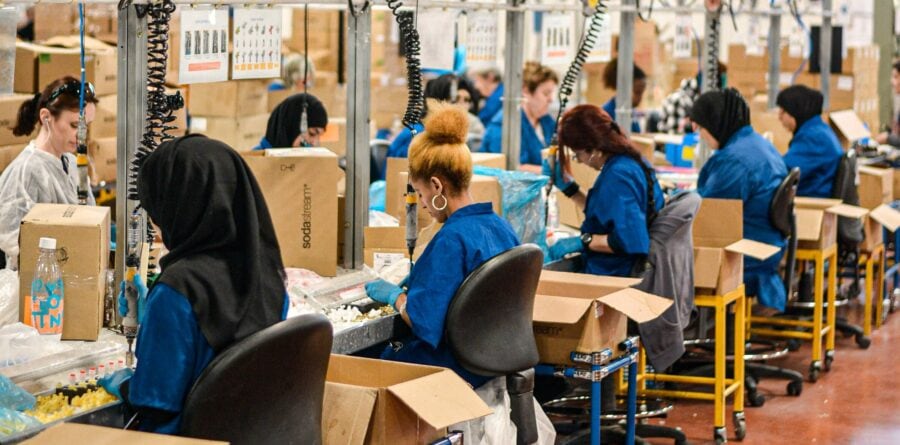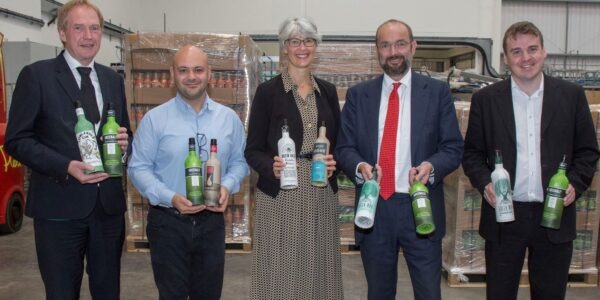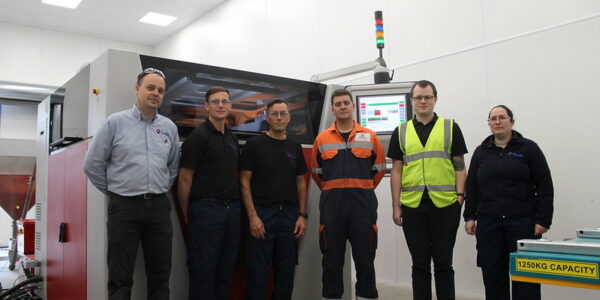Manufacturing outlook remains dim – CBI quarterly industrial trends survey
25/01/2021 - CBI

Manufacturing output stabilised in the quarter to January, following fifteen consecutive months of decline, according to the latest CBI quarterly Industrial Trends Survey.
The survey of 291 manufacturers also found that total new orders fell moderately in the three months to January, after stabilising in the quarter to October, and prior to that, falling for five quarters in a row. A sharp decline was seen in domestic orders, while export orders fell at a similar pace to October.
Manufacturing employment fell again in the three months to January, but at the slowest pace since October 2019. But business sentiment declined significantly after staying flat over the second half of 2020. Optimism around export prospects also continued to fall notably.
Output is expected to fall in the quarter ahead. Firms also anticipate total new orders to fall at a slightly quicker pace, reflecting faster declines in domestic and export orders. Headcount is expected to be broadly flat.
Meanwhile, almost half of manufacturers – the highest share since January 1975 – are concerned that access to materials or components may limit their output over the quarter ahead.
Rain Newton-Smith, CBI Chief Economist, said:
“Output was broadly flat in this month’s quarterly survey, with the picture varying in different sectors. Manufacturers across the board are continuing to battle major headwinds, with domestic and export orders notably falling.
“With growing costs and materials shortages mounting further pressure on firms at a time when they’re experiencing much less demand, the Government must avoid tapering off existing business support with a cliff edge in March.
“Acting swiftly ahead of the Budget to boost cash flow and shore up resilience will be essential. Crucially, extending the Job Retention Scheme and repayment periods for VAT deferrals until the end of Q2 will go a long way. And for the duration of the crisis, business support must remain in lockstep with restrictions.”
Tom Crotty, Group Director at INEOS and Chair of the CBI Manufacturing Council, said:
“Most manufacturers will have been glad to see the back of 2020, but firms continue to operate in very difficult circumstances and the impact of this is being felt across the sector.
“While the start of 2021 is challenging, the COVID-19 vaccine drive brings with it a real sense of optimism for the future. The manufacturing sector can be an engine for UK’s economic recovery post-covid and firms are keen to work with government to make this happen. In the meantime however, it’s essential that the sector receives the support it needs to get through the next few critical months.”
Output
- Output volumes in the quarter to January were broadly flat, following 15 consecutive months of decline (-2% from -6% in December).
- Output grew in 9 out of 17 sub-sectors, with expansions in pharmaceuticals and mechanical engineering output offset by a fall in food, drink & tobacco volumes.
- However, manufacturers expect output to fall once again in the next quarter (-24%).
Orders
- Total new orders in the quarter to January fell moderately (-12% from -3% in October). Domestic orders declined (-20 from +5% in October) while export orders fell at a similar pace to October (-13% from -14%)
- Manufacturers expect total new orders to fall at a slightly quicker pace next quarter (-17%). Both domestic orders (-32%%) and export orders (-24%) are expected to see faster declines.
Headcount
- Numbers employed in the three months to January fell at a slower pace than in October (-10 from -27). Firms expect headcounts to be broadly flat next quarter (-1%).
Costs and prices
- Average cost growth in the quarter to January (+34% from +16%) accelerated to its quickest pace since July 2018 (+36%). Cost inflation is expected to accelerate further in the next quarter (+55), marking the highest expectations since July 2008 (+58%).
- Average domestic prices grew in the quarter to January (+7% from -1%) at their quickest pace since April 2019 (+11%) and are expected to grow at a broadly similar rate next quarter (+4%).
- Average export prices (+5% from -12%) grew slightly, for the first time since October 2019. However, they are expected to decline marginally next quarter (-4%).
Business sentiment
- Business sentiment declined in the quarter to January (-22% from 0% in October). Export sentiment fell at a broadly similar pace (-23%) to October (-21%).
Investment
- Firms’ investment intentions for the next year have deteriorated for plant & machinery and product & process innovation.
- Spending on training & retraining is expected to be broadly unchanged compared to last year.
- Capital expenditure on buildings is expected to decline next year (to a similar extent to last quarter).
For more information visit the CBI website
All articles on this news site are submitted by registered contributors of SuffolkWire. Find out how to subscribe and submit your stories here »


